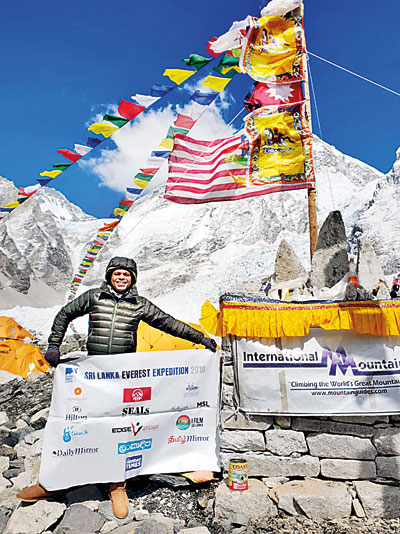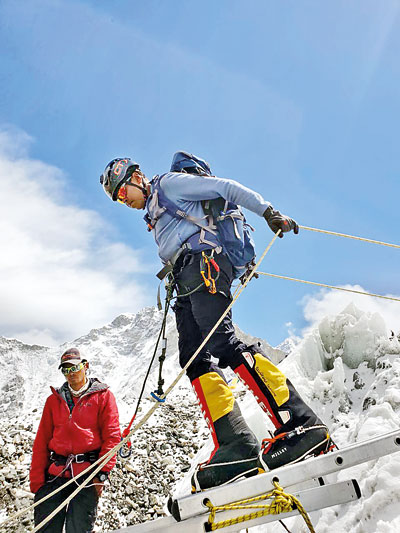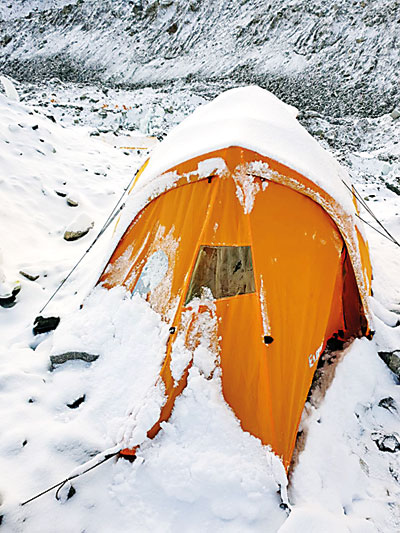First acclimatisation climb to Lobuche peak
This time two weeks back I was in Periche, at 4,371m, two stops before the famous Everest Base Camp (EBC). After Periche we moved on to Gorak Shep and then to Lobuche village. Lobuche village is most famous for the Lobuche peak which stands at 6,119 m. It is a particularly tough climb, and is typically done in preparation for the climb to the summit of Everest .Here we did an acclimatization climb through Lobuche Base Camp, and then up to Lobuche high camp. Acclimatization is a critical part of any high altitude climb, and is done to prepare the body for the thinning air. The saturation or density of oxygen in the air declines rapidly with altitude, and acclimatization helps the body to produce more red blood cells to be able to manage with the thinner air.

Week 2-3
After the acclimatization climb to high camp at Lobuche we descended and proceeded onward to EBC, our home for the next 5 weeks until we complete the summit bid. It was a relief to get into our new base, meager as it is, a home away from home.
After a day of rest at EBC we returned to Lobuche, this time to climb to the peak, 6,119m. We took four days in total to complete this climb, camping at Lobuche base camp and Lobuche high camp. After the climb to Lobuche Peak we returned to EBC, after the arduous climb, quite exhausted, and many of us afflicted with the famous Khumbu cough, named after the Khumbu Icefall which skirts EBC, It is a dry cough, which affects most climbers at some time due to the severe cold and wind. After another day of rest we did some ice-training and ladder-training in preparation for the infamously treacherous Khumbu Ice Fall along the way to Camp 1. On Monday April 30 we set off on a five-day rotation up through the Khumbu Ice fall up to Camp 1, then up to Camp2 and then back down to EBC.

Ladder training at EBC in preparation for the Khumbu Ice fall

My tent at EBC – home for 5 weeks. Nice and cosy!


